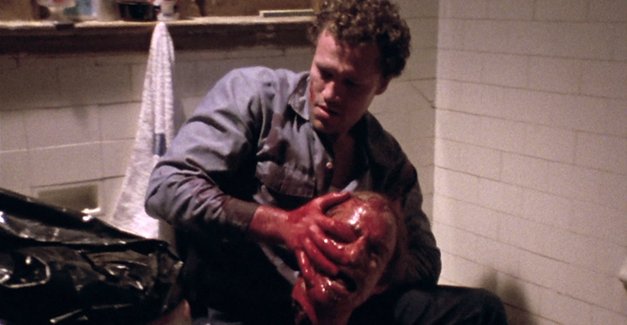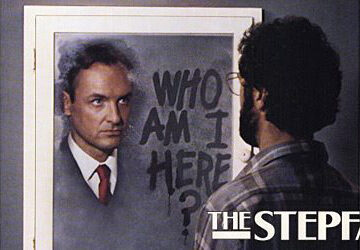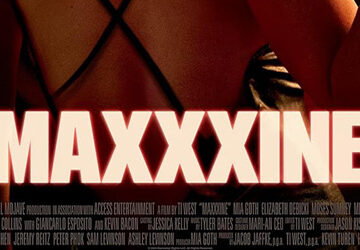This week in Horror movie history, Henry: Portrait of a Serial Killer was first shown at the Chicago International Film Festival on September 7, 1986, after being independently produced by Maljack Productions. Loosely based on real life serial killer Henry Lee Lucas, Henry was produced, directed, written and composed by John McNaughton (Wild Things 1998, Masters of Horror TV series). McNaughton would gather many of the same crew together again for 1991’s The Borrower, including E/R’s Richard Fire and Steven A. Jones (Mad Dog and Glory 1993, Wild Things 1998) as scriptwriters and Jones and Ken Hale as composers, along with actress Tracy Arnold (Sex, Love and Cold Hard Cash 1993, The Shot 1996). Filmed in Illinois, Henry stars the intense and off-kilter Michael Rooker (The Walking Dead TV series, Slither 2006) in his first major film role as the sinister Henry, the late Tom Towles (Devil’s Rejects 2005, Halloween 2007) as his slow but psychotic partner, Otis, and Arnold as Otis’ sister, Becky.
- Still from Henry: Portrait of a Serial Killer
The film opens with shots of dead and mutilated corpses – two are floating in a shallow river, two are lying on the floor of a diner and one is sitting on a toilet with a broken bottle sticking out of her mouth – interspersed with scenes of the serious looking Henry (Rooker) driving around Chicago. When he comes home, he is introduced to petite Becky (Arnold), the sister of his perverted, drug-dealing roommate, Otis (Towles), who will be staying with them after leaving her daughter and abusive husband back home. Henry sweetly offers her his bedroom. Later that night, Becky and Henry play cards and bond over their terrible childhoods, where Henry admits to killing his own mother, although he cannot seem to remember how. As Becky scours the city looking for work, Henry and Otis pick up a couple of prostitutes. When one of them complains that Henry is being too rough, he snaps her neck. Not wanting to leave a witness, he snaps the neck of Otis’ girl, too. At first, Otis is shocked, but it is not long before he loosens up and wants to kill someone himself. The men go to a local pawn shop where the store owner gives them a hard time about buying a color TV. Nonplussed, Henry repeatedly stabs the man with his own wood-burning tool, killing him. Not only do they take the TV that they wanted, but they also lift a video camera.
As Otis films homeless men fighting, Henry explains to him about modus operandi and says that they need to use different methods to kill or else the cops will be able to follow the patterns back to them. The men slaughter a husband, wife and teenage son and record the murder and posthumous molestation of the woman on their dandy new camera. They become obsessed with watching this video over and over. When Becky decides to go back home to her daughter, she asks Henry to go with her. After a steak dinner, she tries to seduce him, but he seems almost frightened of what he might do to her if allowed to continue. He practically flees to buy cigarettes when Otis interrupts them, but when he returns, Otis is actively raping and strangling Becky.
The two men fight, and when it seems as if Otis has the upper hand, Becky stabs him in the eye with the sharp handle of a metal comb. As he lays howling on the floor, Henry stabs him in the gut, killing him. Without missing a beat, Henry dismembers Otis’ corpse. The two dump suitcases full of chopped up Otis into the river and Henry suggests they go visit his sister in San Bernardino. Becky says she loves him and he says it back mechanically. They get a hotel for the night, and once again, Becky tries seducing Henry, unaware of what he does when he has sex. The next morning, Henry leaves the hotel alone with only a bulging suitcase as company. He leaves the bloody tote on the side of the road, and as the camera pans in on what the audience can only assume is Becky’s dead body, Henry drives off into a uncertain future.
- Still from Henry: Portrait of a Serial Killer
The production for Henry: Portrait of a Serial Killer began as an afterthought. Malik B. Ali and Waleed B. Ali of Maljack Productions had initially hired McNaughton to film a documentary on wrestling, but when that fell through, the director happened upon an episode of 20/20 about serial killers that featured the deadly drifter Henry Lee Lucas. Maljack Productions loved the idea. Taking his $110,000 budget from the depleted doc, McNaughton got his friends and family together and made Henry, filming on low quality 16mm stock. Entering the Chicago International Film Festival with a gritty, almost Texas Chain Saw Massacre (1974) feel to it, the film attracted both controversy and positive critical reviews. Unfortunately, the reason for the buzz was also the reason no distributing house would touch them, and it was not until 1989 that the movie was finally released. With its gratuitous sexual proclivities and bare bones murder scenes, Henry started off with an X rating.
Because of this, McNaughton and Maljack Productions had a heck of a time finding a distributor, and the film sat in film festival obscurity until Roger Ebert saw and praised it at the Telluride Film Festival in 1989. Once Ebert’s review circulated, Greycat Films jumped at the chance and picked up Henry for a limited release on January 5, 1990. Since then, the film has been continuously overanalyzed and re-edited, with bits being taken out and then put back in to satisfy audiences and critics alike.
Optimum Releasing submitted a fully uncut version of the film on DVD in 2003, containing a director’s commentary from 1999, a censorship timeline, comparisons of edited and unedited scenes, two interviews with McNaughton, a stills gallery and a text biography of Henry Lee Lucas. A special 20th Anniversary Edition two-disc DVD was released by Dark Sky Films in the US in 2005. This DVD included a newly recorded commentary from McNaughton, a fifty minute making-of documentary, a twenty-three minute doc about Henry Lee Lucas, twenty-one minutes of deleted scenes with commentary from McNaughton, a stills gallery, the original storyboards and a reversible cover featuring the banned original poster art by Joe Coleman. A Blu-ray was finally released in 2009. There was also a 1996 sequel, Henry: Portrait of a Serial Killer Part II, starring Neil Giuntoli as the unemotional antihero. Rotten Tomatoes gives Henry an 88% fresh rating and AFI’s 100 Years… 100 Heroes and Villains nominated the psychotic serial killer for worst villain.
- Still from Henry: Portrait of a Serial Killer
According to the cast and crew, Rooker remained in character for the duration of the twenty-eight day shoot. Costume Designer Patricia Hart traveled to the set with Rooker daily and never knew from one minute to the next if she was talking to Michael or Henry. He even scared his wife so badly that she kept mum about her newly discovered pregnancy until after filming was finished. Rooker won a Golden Space Needle Award in 1990 and an International Fantasy Film Award in 1991 for his portrayal of the cold-blooded sadist. In total seriousness, the actor once said, “I can bring that role back in a second. I just rip into the little idiosyncrasies and it’s interesting, I’ve never said good-bye to Henry. That character, the introverted-ness, the soft-spoken quality is always there.”
The film’s opening statement clarifies that the film is based more on Lucas’ severely disturbing fantasies and unfounded confessions rather than on the crimes themselves. The film version of this psychotic, antisocial drifter’s life is chilling, especially with the knowledge that at least some of those murders, including the matricide of Viola Lucas, are based on true accounts. Lucas died at age sixty-four on March 12, 2001 in a Huntsville, Texas prison, but his notoriety did not die with him. Even after being cleared of so many confessed to crimes, Lucas is still thought of as the most prolific serial killer in US history. Simply put, one cannot watch Michael Rooker in any other role without shivering as the subconscious memory of his haunting portrayal drifts to the surface, if only for a moment.
- Greycat Films









No comment